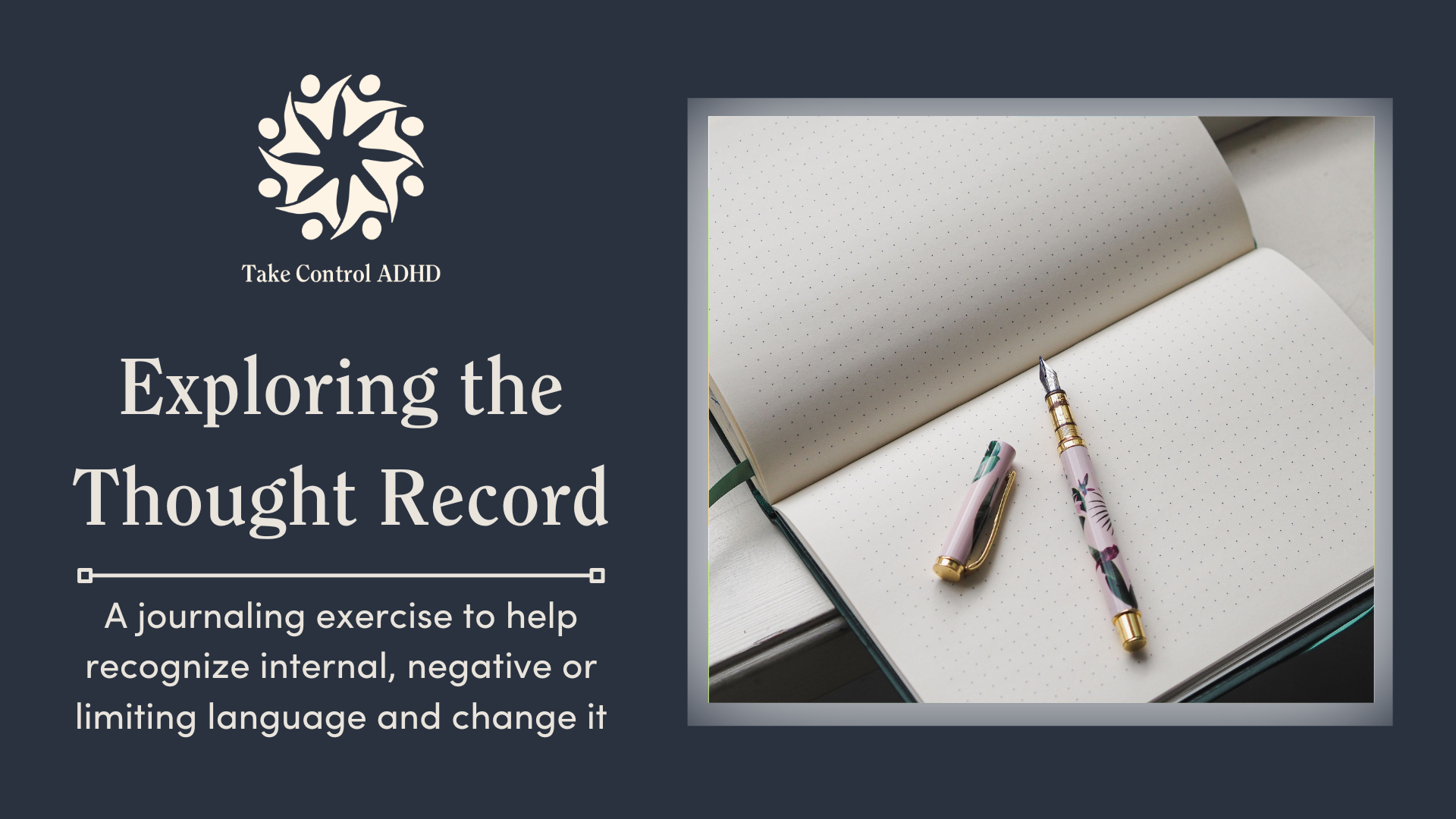Exploring the Thought Record
Have you ever considered how we impact ourselves,
and others, with the words we use?
Even small, common words that you may not have previously considered, like "just" or "simply", can have a huge impact—an impact we never intended.
Telling yourself, "it's just the laundry" supposes this is an easy task, but it may easily create shame if the laundry is often a difficult task for you to complete.
Describing an action to someone else by saying they need to "simply" complete the task can minimize the effort required to complete the task. It can cause others to experience negative feelings about themselves if it turns out the task wasn't so “simple”.
We may discover that we are saying these words to ourselves and others without actually realizing the impact they could have internally or to people around us.
But, if we take the time to reflect and maybe even adjust our thinking or the words we use, we might start to notice these times more often, and it could start making a difference in how we treat ourselves and others.
Journaling Exercise
On a recent episode of Taking Control: The ADHD Podcast, Pete Wright and I discussed how the language we use can be limiting in different ways.
During our conversation, Pete shared a fantastic journaling exercise to help pinpoint when we are using limiting language, as well as discovering ways to change the narrative for a more positive outcome.
This journaling exercise is commonly known as the Thought Record.
The Thought Record is an exercise that was created by psychiatrist, Dr. Aaron T. Beck, in the 1960's. The Thought Record, as well as many other works from Dr. Beck, are still used today as part of Cognitive Behavioral Therapy (CBT). In fact, many in the field of psychiatry even consider Dr. Beck to be the "father of Cognitive Behavioral Therapy", where he created many of the techniques that are still used as part of CBT today.
The Thought Record
Below, I have provided a list of steps to complete a thought record exercise. At the bottom of this post, I have also included a link to a free downloadable worksheet for completing the Thought Record, supplied by The Beck Institute.
As a side note, this exercise is best used when you find yourself experiencing negative thoughts or feelings, especially when they were triggered by a specific incident or interaction with another person.
Step 1: Describe the event that caused you to experience the negative thoughts or feelings.
Step 2: What emotions did you experience during the event described in the first step?
Step 3: What thoughts popped up right away during the event?
Step 4: Do you have any evidence to support the immediate thoughts from step 3 to make those thoughts true? What is the evidence?
Step 5: Do you have any evidence against the immediate thoughts from step 3 to make those thoughts false? What is the evidence?
Step 6: How can you use the evidence against the immediate thought to create a new, more balanced thought?
Step 7: Take a moment to consider this new thought perspective. Does this alter the emotional response you recorded in Step 2? If so, what is the difference?
Once you complete this exercise a few times, you may begin to see patterns or recognize negative self-talk, as well as finding ways to change the language and give yourself a new, more positive experience and outlook.
Thank you for your time and attention,
Nikki
Get a free pdf download of the Thought Record worksheet, provided by the Beck Institute, here

